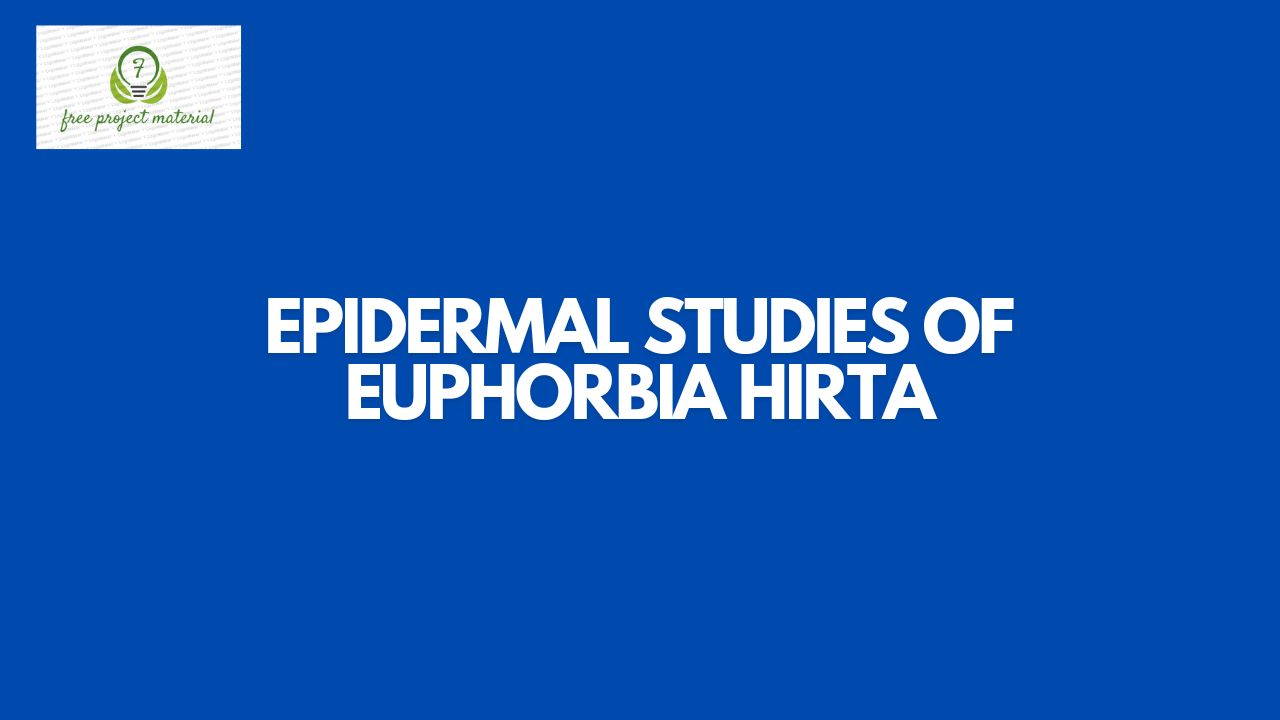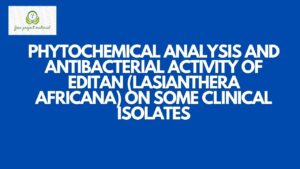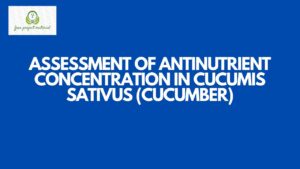ABSTRACT
Euphorbia hirta is a genus of flowering plants, commonly called spurge; it is also called spurge family (Euphorbiaceae). Leaves of Euphorbia Hirta L. contains secondary metabolite such as alkaloids, diterpenoids, stigmasteron, beta-siteosterol, carboaromatic compounds polyols. Alkaloids and phenolic acids, are major chemical compounds present in stem of Euphorbia hirta. The plant is medicinally important. The root, stem, leaves, fruit and seeds are all useful as medicine. The present study deals with anatomical studied of the Euphorbia Hirta like stomata, sections of root and stem. This study will be helpful in correct identification and standardization of the plant material which is of medicinal importance.
TABLE OF CONTENTS
Title Page- – – – – – – – – – i
Certification- – – – – – – – – ii
Dedication- – – – – – – – – – iii
Acknowledgements- – – – – – – – iv
Abstract- – – – – – – – – – v
Table of Contents- – – – – – – – – vi-viii
CHAPTER ONE: INTRODUCTION
1.1 Background of the Study- – – – – – 1-2
1.2 Aim and Objectives of the Study- – – – – 2
1.2.1 Aim of the Study- – – – – – – – 2
1.2.2 Objectives of the Study- – – – – – – 2
1.3 Scope and Limitation of the Study- – – – – 2
CHAPTER TWO: LITERATURE REVIEW
2.1 Taxonomic Classification- – – – – – 3
2.2 Botanical Description- – – – – – – 4-6
2.3 Morphological Description- – – – – – 6-7
2.3.1 Distribution/Habitat- – – – – – – 8
1.3.2 Medicinal Uses- – – – – – – – 8
2.4 Traditional and Folklore Medicinal Uses- – – – 9
2.5 Definition of Stomata- – – – – – – 9-10
2.5.1 Function of Stomata- – – – – – – 10
2.5.2 Types of Stomata- – – – – – – – 10-11
2.6 Mode of Propagation- – – – – – – 12
CHAPTER THREE: MATERIALS AND METHODS
3.1 Materials- – – – – – – – – 13
3.1.1 Collection of Plant- – – – – – – 14
3.2 Anatomical Studies- – – – – – – 14-15
CHAPTER FOUR: RESULT AND DISCUSSION
4.1 Results- – – – – – – – – 16-17
4.2 Discussion- – – – – – – – – 18-19
CHAPTER FIVE: CONCLUSION AND RECOMMENDATION
5.1 Conclusion- – – – – – – – – 20
5.2 Recommendation- – – – – – – – 20
5.3 Suggestion for further studies- – – – – – 20
References
CHAPTER ONE: INTRODUCTION
1.1 Background of the Study
Euphorbia hirta L. belongs to the family of Euphorbiaceae (Hooker, 1883). Family Euphorbiaceae is also called spurge family consisting of about 322 genera and 8,910 species. Species are predominantly cosmopolitan with strongest representation in the humid tropical and sub tropical regions of both hemisphere.
It is the sixth largest family in the world. E. hirta is an evergreen medium sized shrub attaining a height of 4-5 feet, found throughout India, plentifully in the plains of Maharastra, leaves are glabrous, simple, alternate and hairy, oborate to oblong, denticulate or crenate margin, petiolate, unicostate reticulate venation, dark green rough upper surface, faint green lower surface.
It consist of cyathuim inflorescence up to 4 cm long and 4 cm across, scarlet red-brown flowers. Seed is non-vernacular names – English: Pill-bearing spurge, asthma plant, hairy spurge, garden spurge, Bengali; boro-kerui. Gujarati: dudeli, Hawaiian: koko kahiki, Hindi: baridhudi, dudh ghas, dudhi, Sanskrit: chara, amampatchairasi (Joshi, 2000).
1.2 Aim and Objectives of the Study
1.2.1 Aim of the Study
The aim of this study is;
- To determine the diagnostic features that would aid in identification and classification of plant.
1.2.1 Objectives of the Study
The objectives of this study;
To assess the epidermal features of Euphorbia hirta leaf
1.3 Scope and Limitation of the Study
The scope and limitation of this study focus on the epidermal characters of Euphorbia hirta leaf.



